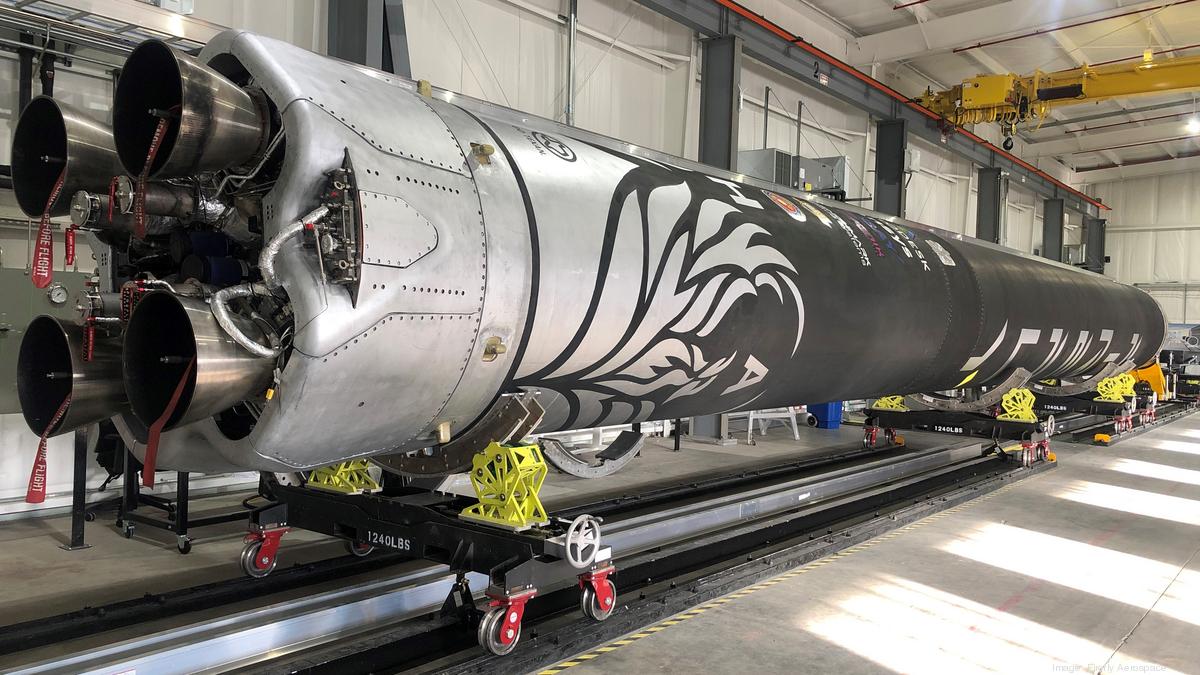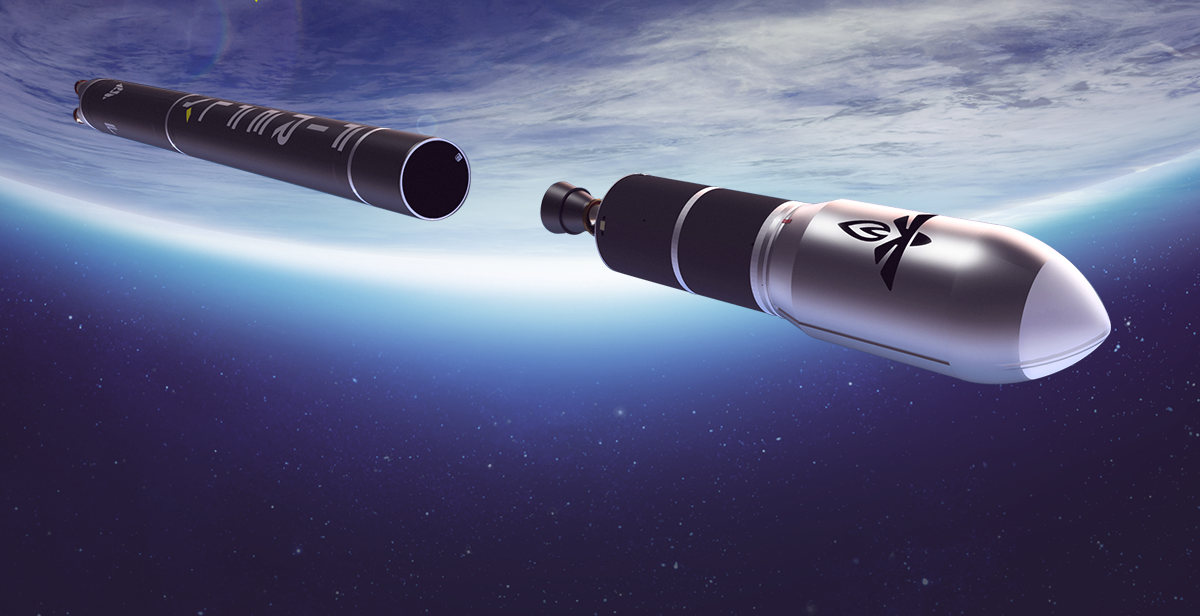
The Combination Of Firefly’s Alpha Launch Vehicle & Space Utility Vehicle
Each day Firefly Aerospace gets closer to its next launch attempt. While the first was not successful, they have been working hard to improve and prepare Alpha for the upcoming launch. It is extremely difficult to reach space and even more so for the initial attempts. One unique combination Firefly takes advantage of involves the use of Alpha and the Space Utility Vehicle.
Firefly Aerospace is working not only on a small-lift launch vehicle named Alpha but also an additional spacecraft named the Space Utility Vehicle. This spacecraft acts as a third stage and when combined at the top of Alpha it creates a very impressive small-lift launch vehicle with much more capabilities than your typical launch vehicle. This in return gives Firefly more options for customers and future missions.
Not only is the Space Utility Vehicle meant to work with Alpha, but also Beta, Firefly’s next-generation medium-lift launch vehicle. Similar to Rocket Lab’s Photon spacecraft, this additional stage unlocks practically endless opportunities including even ambitious missions to the Moon and beyond. Here I will go more in-depth into the design of these components and the possibilities when they are combined.
SUV & Alpha Highlights

Alpha is a two-stage small lift launch vehicle that stands at 30 meters tall. By itself, it has a max payload capacity of 1000 kilograms to low Earth orbit, and 630 kg to SSO. When creating Alpha, Firefly intended to make an efficient and low-cost launch vehicle for a large host of different missions. Specifically, Alpha provides low-cost capabilities for small satellite customers at a price of $15M for standard commercial launch services. Firefly mentions that they aspire to design and engineer the Alpha launch vehicle as the world’s most reliable, responsive, and operationally capable launch option within the small launch vehicle class.
Then there is the Space Utility Vehicle. The Firefly Space Utility Vehicle, or SUV, is a solar-electric third stage for the Alpha and Beta launch vehicles. Specifically, this small spacecraft helps achieve higher altitudes, more inclinations, payload support for up to 5 years, trajectory changes, and much more. It consists of a main propellant tank in the center, 1 to 4 thrusters, solar panels, and safe payload storage. By itself, the SUV can significantly expand the capabilities of not only Alpha but Beta as well.
Before looking at what Alpha and the Space Utility Vehicle can do when working together, it’s important to see Alpha’s base stats. As I mentioned prior, Alpha is capable of delivering 1 metric ton to Low Earth Orbit and 630 kg to the highly desirable 500 km Sun–Synchronous Orbit. Most specifically, depending on the launch site location and the inclination, the Alpha launch vehicle has quite a few payload options. When launching from the west coast at Space Launch Complex 2, Alpha’s SSO payload capacity ranges from 675 kg to around 800. These same payload capacities are based on inclinations ranging from 110 to 70 degrees. You then can look at launches from the east coast at Cape Canaveral Air Force Station. Here Alpha can deliver around 1025 kilograms at the maximum and 900 at the minimum for 60 degrees inclination up to 29. Now that we know exactly what Alpha is capable of by itself, we can look at the benefits of using both Alpha and the Space Utility Vehicle. The SUV significantly extends the capabilities of the Alpha launch vehicle. For missions exceeding 2000 km, the SUV delivers substantially more payload mass. Specifically, up to 600 kg can be delivered to GEO and up to 500 kg can be delivered to lunar orbit. This small spacecraft by itself enables Alpha to launch a substantial payload capacity to distant celestial objects such as the Moon. In addition, the SUV is generally well suited to high-energy missions, such as those requiring substantial inclination changes. The SUV can carry a single primary payload as well as up to four secondary payloads. Lastly, the SUV can be stacked with a number of deployment rings for a greater number of secondary payloads, or stacked with additional SUVs for increased mission capability. Firefly provides a graphic showing the capabilities of Alpha with and without the Space Utility Vehicle. They point out that all SUV trajectories are calculated from an initial circular orbit at 200 km. This chart is a great example as it clearly shows how the small third stage enables many more mission options whereas Alpha by itself is very limited.
Unique Design

The Space Utility Vehicle sits within the fairings of the Alpha launch vehicle. With a height of only 18 inches, it manages to not take up much room at all and allows larger payloads to still fit within the fairings. In addition, this spacecraft has multiple variants to maximize its capabilities. The first is a Low Earth Orbit variant. The LEO SUV employs a 400 W solar array and commercial off-the-shelf avionics. This vehicle is meant to be a high-value low-cost solution for payloads operating in the low-radiation environment below 2000 km. Then there is the Extended Range Vehicle variant. For payloads operating above 2000 km, or which require rapid transit between trajectories, Firefly offers a high-power and radiation-tolerant vehicle. The extended-range SUV operates at 2–5 kW and is tolerant to radiation dosages exceeding 90 krad. This vehicle can operate at nearly any altitude or inclination as far as cislunar space.
Not only does the Space Utility Vehicle provide additional power that extends Alpha’s mission options, but it also can support payloads once in space. Specifically, the SUV can provide support to the payload during transport to and following arrival at the payload’s destination orbit. For example, once the destination orbit is reached and the propulsion system is powered off, a significant amount of power, up to 5 kW, is available to the hosted payloads. The main support features include power, downlink, uplink, pointing control, stability, and more. This opens up many opportunities like the company’s future mission to the Moon and more.
The Space Utility Vehicle even provides additional benefits such as deorbiting spacecraft. Firefly provides an example highlighting deorbiting a 1000 kilogram second stage with and without SUV. By itself, it would take around 50 months whereas with the Space Utility Vehicle only a few months. Firefly even goes into great detail exactly how with the help of the SUV they could reach the Moon. It consists of a time period filled with orbit raising and more. All of which is only possible thanks to the addition of the small third stage.
Conclusion
A small lift launch vehicle by itself can provide a great service to different customers. This consists of low-cost trips to Low Earth Orbit along with lower payloads to more distant destinations. However, with the addition of a small third-stage spacecraft such as the Space Utility Vehicle, the options are expanded significantly. This includes possibilities of missions to the Moon, further destinations, payload support, and much more. As Firefly continues to test Alpha and prepare for the second test flight, we will have to wait and see how they progress over time and the impact it has on the space industry.
